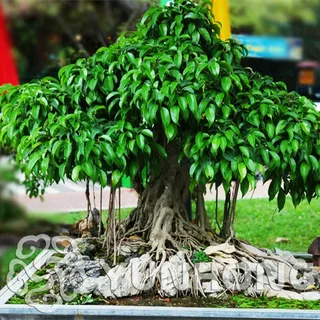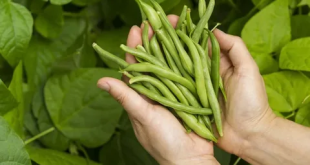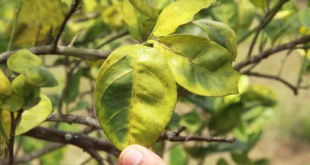Can Ficus Religiosa Grow in Georgia? Imagine a tree that has withstood the test of time—admired for its elegance, resilience, and deep-rooted spiritual importance. The Ficus religiosa, also known as the Sacred Fig, originates from the lush tropical landscapes of the Indian subcontinent. Its distinctive heart-shaped leaves flutter gracefully in the lightest breeze, while its historical and cultural significance makes it a symbol of enlightenment and serenity.
But is it possible to cultivate this ancient marvel in Georgia? Can the Sacred Fig adapt to the Peach State’s unique climate? In this guide, we’ll delve into the feasibility of growing Ficus religiosa in Georgia, the challenges posed by the region’s weather conditions, and essential care tips to help this remarkable tree thrive.

Can You Grow the Sacred Fig (Ficus religiosa) in Georgia?
Understanding Ficus religiosa:
Ficus religiosa, often called the Bodhi Tree, is a deciduous species native to South Asia. It holds great significance in various cultures, representing wisdom, longevity, and tranquility. With its sprawling canopy and gracefully arching branches, this tree adds beauty and character to any landscape.
In its natural environment, the Sacred Fig flourishes in tropical and subtropical climates, growing to impressive heights of 60 to 100 feet. It is highly adaptable and capable of surviving diverse soil conditions and even short periods of drought once established. Beyond its visual appeal, the tree is valued for its medicinal properties, shade-providing capabilities, and air-purifying qualities, making it a sought-after choice for both aesthetic and functional landscaping.
However, Ficus religiosa thrives in consistently warm temperatures with ample sunlight, which raises a crucial question—can it endure Georgia’s fluctuating climate, particularly its cooler winters?
Georgia’s Climate and Growing Conditions:
Georgia’s climate is as diverse as its terrain, ranging from humid subtropical conditions along the coast to cooler temperatures in the Appalachian foothills. Falling primarily within USDA hardiness zones 7 to 9, the state experiences hot, humid summers with average temperatures near 80°F (27°C) and mild to chilly winters, where temperatures can dip as low as 30°F (-1°C) or below in certain areas.
While these conditions are favorable for many plant species, Ficus religiosa thrives best in consistently warm climates with temperatures above 50°F (10°C). Frost and unexpected cold snaps pose a significant challenge, as prolonged exposure to freezing temperatures can damage the tree’s foliage and hinder its growth.
Georgia also features a wide variety of soil types, from the clay-heavy compositions of the Piedmont region to the sandy soils near the coast. While the Sacred Fig is relatively adaptable, it prefers well-drained, loamy soil with good moisture retention—factors that can be enhanced through soil amendments such as compost and organic matter.
Challenges of Growing Ficus religiosa Plant in Georgia:
Although Georgia’s warm summers may seem ideal for the Sacred Fig, several challenges must be addressed to ensure successful cultivation:
- Sensitivity to Frost and Cold Weather – Ficus religiosa does not tolerate frost well. While brief dips in temperature may not be fatal, extended exposure to freezing conditions (below 32°F/0°C) can cause leaf damage and stunt growth.
- Humidity and Watering Needs – The tree prefers high humidity, but Georgia’s fluctuating moisture levels may require careful monitoring, especially during dry spells, to prevent dehydration.
- Pests and Diseases – Common pests such as aphids, scale insects, and spider mites can infest the tree, while fungal infections like powdery mildew may develop in humid conditions.
- Soil Considerations – While Ficus religiosa can adapt to different soils, well-draining, loamy soil with good aeration is essential for optimal growth.
Tips for Successfully Growing Ficus religiosa Seeds in Georgia
Despite these challenges, with the right care and environment, you can cultivate a healthy Sacred Fig in Georgia. Here’s how:
- Select the Best Location – Choose a spot with plenty of sunlight while providing protection from harsh winds and cold temperatures. A sheltered area with afternoon shade is ideal.
- Frost Protection – If growing outdoors, consider moving the tree indoors or into a greenhouse during winter months to prevent frost damage.
- Enhance Soil Quality – Improve drainage and moisture retention by amending the soil with compost and organic material. Slightly acidic, loamy soil works best.
- Monitor Watering and Humidity – Maintain consistent watering while ensuring proper drainage. If growing indoors, use a humidifier to replicate its native tropical environment.
- Fertilize During Growth Periods – Apply a balanced fertilizer in the spring and summer to support strong growth.
- Inspect for Pests and Diseases – Regularly check for signs of infestation and treat issues promptly using natural pest control methods.
- Consider Container Growing – Growing Ficus religiosa in a large pot allows for better control over environmental conditions, making it easier to move the tree indoors during winter.
Real-Life Success Stories
Although Ficus religiosa is not widely cultivated in Georgia, some dedicated gardeners have successfully grown the tree by adapting their care methods:
- A Successful Outdoor Growth Case – A gardener in southern Georgia planted the tree in well-draining soil, shielded it from winter winds, and transferred it to a greenhouse during colder months. After several years, the tree reached an impressive height of 10 feet.
- Indoor Cultivation in Metro Atlanta – A plant enthusiast in Atlanta grew a Sacred Fig indoors, positioning it near a south-facing window and maintaining proper humidity, ensuring steady growth.
- Challenges in Northern Georgia – Gardeners in the northern regions struggled with frost damage, ultimately resorting to bringing the tree indoors during winter for protection.
- Greenhouse Cultivation – Some have successfully grown Ficus religiosa in a greenhouse, where controlled temperature and humidity levels closely mimic its native tropical habitat.
Conclusion: Can Ficus religiosa Grow in Georgia?
The answer is yes—with the right approach and proper care. While Georgia’s climate presents certain obstacles, strategic planning can help the Sacred Fig flourish. Whether grown in a greenhouse, as an indoor plant, or outdoors with seasonal protection, this sacred tree can bring beauty, shade, and spiritual significance to any garden.
If you’re willing to provide the right conditions, growing Ficus religiosa in Georgia can be a deeply rewarding experience, adding both natural elegance and cultural richness to your space.



